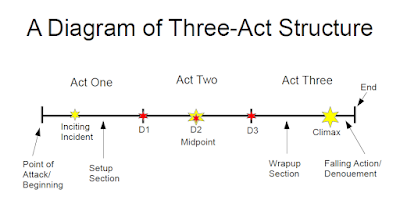Ingermanson's Snowflake Method to Writing a Novel
Ingermanson's Snowflake Method to Writing a Novel
Write a one-sentence summary of the story. This is a story about... what? A hobbit travels across the world to destroy a sinister magic ring (Lord of the Rings). A common street rat helps with a plan to overthrow a god (Mistborn: The Final Empire).
Expand the single-sentence-summary into a full paragraph describing the major details of the novel, including several disasters and the ending.
Write a one-page sheet for each major character, telling their name, their storyline (in a sentence-summary), their motivation (abstract want), their goal (concrete want), their conflict (obstacles), their epiphany (what they learn/how they change), their storyline (in a paragraph-summary).
Expand each sentence of the summary paragraph into a full paragraph, ending each non-ending paragraph with a disaster. This creates a one-page synopsis.
Write character synopses for each of the characters, giving a page for the major ones and a half-page for the minor ones. Summarize the story from their viewpoint.
Take the one-page story synopsis and expand it. Each paragraph should become a page.
Take each character synopsis and expand it into a full-fledged character chart, telling all there is to know about them. Most importantly, how do they change by the end of the novel?
Take the expanded synopsis and make a list of every scene needed in the novel. Spreadsheets are the easiest way to do this: in one column show the name of the POV character, in another, wider column, give the gist of what happens in the scene.
Optional step: take each scene from the spreadsheet and write a paragraph detailing what happens in it. If there's no conflict in the scene, either add some or ditch the scene. This is sort of a first-draft prototype, and it should be easy after steps 1-8.
Sit your butt down and write the story. By now, all the large-scale stuff is done, so all you have to do is work out the little details and logic problems. There should be no issue with writing your way into a corner, or hitting the end of the trail, or wandering off into the weeds, or hitting a wall and not knowing how to get the characters out of this situation. From what I can tell, it should feel like an easy Noble Thief revision—all the hard work is already done, so all you have to do is write.

Comments
Post a Comment
Have a thought? Share it! I love hearing what other people have to say.